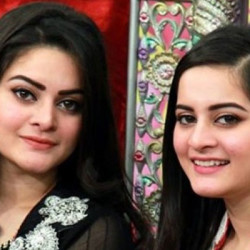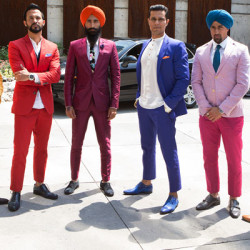
HuffPost India
Cinema in Pakistan seems to be going through a strange turn. To be particular, most films in this new wave of cinema are fundamentally the same, featuring recycled themes of either overt patriotism or heavy-handed sexual innuendo. Of course, these are the kinds of films that the majority of the cinema-going population in Pakistan seems to embrace.
I found myself watching one such film, Wrong Number this Sunday. As I endured the painfully one-dimensional screenplay, I realized that a serious collapse of our rejuvenating industry is at hand. There’s absolutely no narrative in Wrong Number. You can just see a number of people reduced to caricatures suffering the after-effects of a worn-out script. Yet, Wrong Number happened to gross approximately PKR150 million at the domestic box-office, thus becoming the second-biggest hit of 2015 and fifth highest grosser of Pakistani cinema ever.
What has happened to the revival of Pakistani cinema? Has it disappeared into oblivion before making any mark? Was Pakistani cinema’s reincarnation only gilded, not gold?
There was another such movie released last year called Halla Gulla. It was such an awful film that within the first 20 minutes, I started to feel embarrassed for the actors on screen. It was abysmally bad.

Blockbuster films like Wrong Number are warmly welcomed by wannabe film critics and bloggers, who create positive word of mouth for the films that satisfy their cravings the most or get their blogs the most hits. There’s also the fact that these films are targeted at typical audiences that prefer to consume this kind of malarkey every Friday rather than invest their time, energy and money on intelligent cinema like Seedlings or Dukhtar.
Film producers provide an excuse by mentioning that people want to watch such films to be distracted from the tough economic times. Movie-goers didn’t see Sarmad Khoosat star in Manto? Why shouldn’t Pakistani audiences be exposed to that level of brilliance?
The sweet spots of 2016
Six local films saw the light of the day in cinemas this year, out of which only Bachaana and Ho Mann Jahaan managed to shine.
Bachaana was a by-product of Nasir Khan’s love and affection. It was a whimsical yet heartfelt look at the cross-border relationships. Even though it didn’t come without its share of flaws I appreciated its crisp runtime and brisk narrative.
On the other hand, Ho Mann Jahaan had its heart in the right place but was seriously hampered by its runtime of more than 150 minutes. However, the film was uplifted by the heart-warming performances by Sonya Jehan and Sheheryar Munawar Siddiqui.
It narrates a sweetly sentimental tale of friendship, often invaded by embarrassing clichés, but beautifully mounted to break the monotony of a dreary life, at least for a while.
The spectacularly dumb
Then arrived the ludicrous Maalik that is stupid enough to be outlawed. The filmmakers tried to gain publicity by using outdated tactics to get the attention of audiences, but failed miserably. Alas! Like the film, the entire scheme wasn’t well-scripted.
Robert G. Ingersoll rightly said, “In the republic of mediocrity, genius is dangerous.”
Going by Ingersoll’s word, Farooq Mengal is a genius. His latest film Hijrat is the flag-bearer of poetic profundity. His actors are the role models, who will be revered for decades.
Oh, wait! I have just made it sound like an intriguing film. It’s not. It tests your patience. The dialogue is so preposterous that it unintentionally becomes the stuff of pure comedy. The plot is so laborious that it will make you cringe, making us feel that making movies can be dangerous as well.
Mah-e-Mir: the saviour?
I firmly believe that Anjum Shahzad’s Mah-e-Mir is a step forward for the Pakistani film industry. The attention Shahzad pays to minutiae — ranging from richly textured sets to the diction of the central characters — makes Mah-e-Mir a feast for art lovers, especially connoisseurs of Mir Taqi Mir’s poetry. It’s not just the poetry that bewitches you: the costumes, the make-up, the hairdos are all top-notch.
I firmly believe that Anjum Shahzad’s Mah-e-Mir is a step forward for the Pakistani film industry.
Although written more than a century ago, the subtext of Mir’s poetry is incredible. In Mah-e-Mir, it is used to depict the predicament of a young writer jostling with his own identity, like any other writer in Pakistan today.
Shahzad’s Mah-e-Mir is an avant-garde, experimental and unconventional experience. The delicately made film offers a rich tapestry of colours and a glance into a new approach to filmmaking in Pakistan.
In terms of content, Mah-e-Mir is solid. By the time you get involved in the movie, it hits you with its own sense of haunting melancholy. Shahzad trusts his audiences blindly. He boils the film to a required temperature and leaves it to the audiences to fish out the deep message underneath.
The future
The Pakistani film industry continues to pump out plot-free movies featuring gibberish instead of a screenplay, à la Karachi Se Lahore, and schmaltzy romances with endings that a child could have predicted, à la Bin Roye. It just reasserts Pakistani cinema’s belief in commercial elements over quality content.
As more and more people, both in Pakistan and the world, choose to go out and watch films over the weekends and weekdays, Pakistani cinema needs to increase the quality of films, not the quantity.
We have to understand that there needs to be an incentive for people to go to the movies, and that incentive should come from Pakistani cinema creating better films.
As a writer I just hope that movie-goers should recognise the painful state of Pakistani cinema and begin to think outside the mainstream when choosing which film to watch.
Courtesy: Instep







